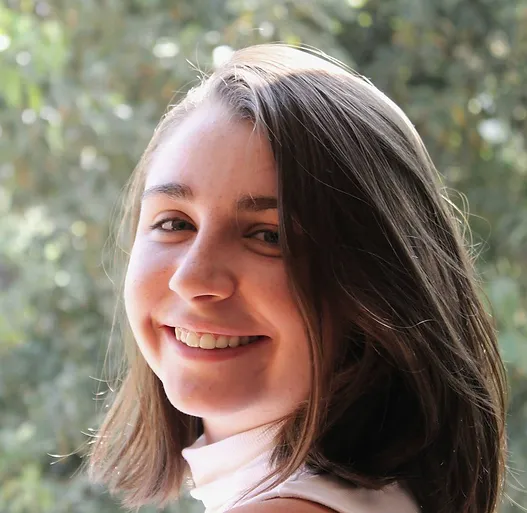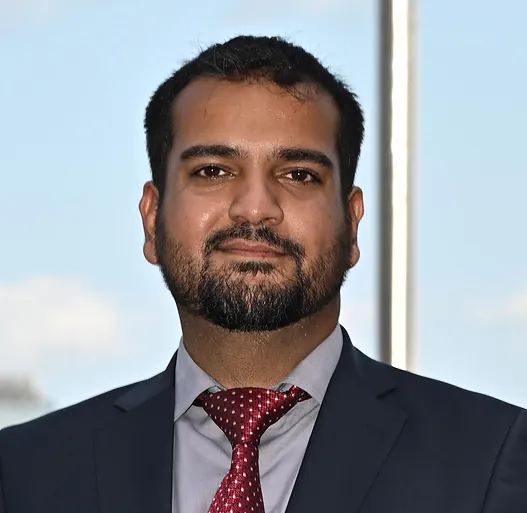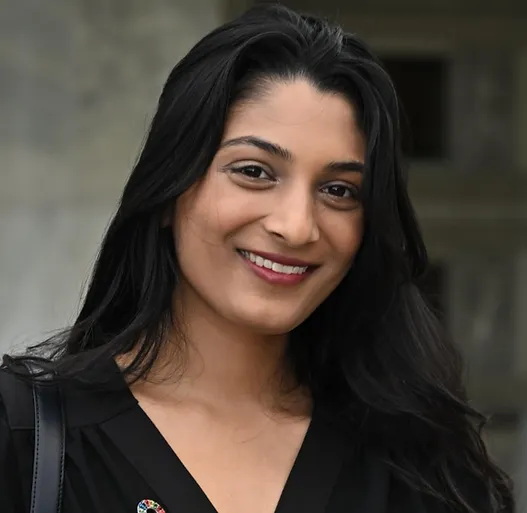
III
Pillars: Creativity
We are all aware of the critical global issues facing our planet, from environmental degradation to human rights violations such as pollution, deforestation, and inequality.
While there are numerous proposed solutions, the Swarovski Foundation firmly believes that creativity can be a powerful force for change in the modern world and can significantly impact our environmental footprint and societal impact.
Unfortunately, the COVID-19 pandemic exacerbated existing inequalities, particularly in education, with disadvantaged communities facing decreased access to Art & Design education, leading to a decline in creativity among young people.
Recognizing the significance of education, we are committed to focusing our efforts on providing quality creative education through partnerships and programs. We also acknowledge that the skills, knowledge, and resources obtained through education need to be connected and sustained to enable positive change and increase sustainable livelihoods.
We will strive to create a world where creativity and education can drive meaningful change and ensure that no one is left behind in the pursuit of a better future for all.
The Design Museum holds a special place for us as one of the first partners we ever had the privilege of working with, shortly after the inception of the Swarovski Foundation in 2013.
As the world’s leading museum of contemporary design and architecture, the Design Museum showcases exceptional design through a captivating program to inspire, engage, and thrill audiences. The museum’s mission is to invite everyone to experience and contemplate the influence of contemporary design in all forms, through exhibitions, events, learning activities, and online content.


Our initial collaboration with the museum aimed to provide accessible educational facilities for young people to learn about the role of design and its impact. In 2017, the Swarovski Foundation Centre for Learning was established, an inspiring facility equipped to promote and support design education through creative workshops to excite, inspire and engage students.
As we approach a decade of partnership, we are proud to continue our collaboration with the Design Museum. Together, we have developed the Sustainable Design School program, a series of design-based workshops that aim to educate young people and empower them to make sustainable decisions in their everyday lives and future design practices. We hope that our joint efforts will leave a lasting impact and help shape a brighter future for our planet.

In 2014, we began empowering gifted design students by awarding scholarships at Central Saint Martins, University of the Arts London. Our aim was to unleash their creative potential by providing guidance from esteemed academics and leveraging their extensive college network. Central Saint Martins is celebrated worldwide for the boundless creative energy of its students, staff, and alumni.


So far, we’ve supported 44 students – 22 studying jewelry design and 22 studying fashion design – to complete their final year of study in BA Fashion Design and BA Jewellery Design. These talented individuals have been equipped to use their skills to respond to pressing challenges and make a positive impact, as our goal is to advance creative talent that can tackle major societal issues and contribute to creating a brighter future.

Realizing the urgency and immense potential to revolutionize the future of the fashion industry, the Swarovski Foundation and the Council of Fashion Designers of America (CFDA) teamed up to launch the Re: Generation Innovation Scholar Award in 2021. The aim of this award was to promote innovative design thinking and learning within sustainable fashion systems.
Bailey Adams was the most recent inaugural scholar of the Re:Generation Innovation Award. He was granted financial support and comprehensive educational mentorship, industry consultations, field visits, public exposure, and access to CFDA’s prestigious network. This personalized program equipped Bailey with advanced knowledge and skills for low-impact production systems, such as ethical sourcing, materiality, and sustainable or natural dyeing techniques.


Bailey applied these new skills to his Thesis Collection, which is now showcased on CFDA Runway 360. He now understands the importance of responsible creation and decision-making in fashion design and is committed to following sustainable production protocols at Tory Burch. Thanks to this award, Bailey is now a conscientious designer, capable of innovating within the constraints of a sustainable fashion system and is committed to making a positive impact on the industry.

We understand that emerging designers require support and guidance to embrace sustainable and innovative production systems. That’s why we partnered with Fashion Council Germany and The Prince’s Foundation to launch an educational program, FASHION X CRAFT in 2021, which combines sustainability, craftsmanship, and innovation, with an emphasis on artisanal techniques and natural resources.
It offers a 3-week residency at The Prince’s Foundation’s new educational facility at Highgrove, where 6 selected participants learn craft skills such as basketry, decorative plasterwork, and woodcarving. In addition, the program features supplementary webinars and a 3-day intensive workshop to advance participants’ understanding of the circular economy and sustainable practices.


By participating in FASHION X CRAFT, emerging designers gain access to a supportive network of like-minded individuals and acquire the knowledge and skills necessary to implement sustainable production practices in their designs. They are empowered to leverage traditional artisanal techniques to create innovative, sustainable fashion that has a positive impact on the environment and society.
As a charity, it is our duty to empower communities in need.
After the Syrian crisis, over half of Syrians were forced to leave their homes, and Jordan is now home to millions of refugees from Palestine, Syria, and Iraq. These refugees require employment, hope, and a positive connection to their heritage. However, young refugee women in Jordan face societal and cultural barriers that prevent them from accessing dignified employment. In fact, 93% of young refugee women are unemployed.


To combat this issue, Turquoise Mountain identified a shortage of skilled makers in the handmade jewelry sector, which also presents a growing global market opportunity. Thus, we saw it as essential to support these young women through educational programs to help them generate sustainable income after completing the program. Through our partnership with Turquoise Mountain, we are empowering 43 young people, 90% of whom are women, by providing them with advanced technical and design skills as well as business knowledge.
Specifically, 5 Syrian and Jordanian women received advanced technical skills through a 4-month design workshop, combined with one-to-one mentoring from jewelry designers and master artisans to learn production steps.
Additionally, 18 young people joined an entrepreneurship course which provided intensive capacity building training to support their businesses. 10 of the top young entrepreneurs from this programme progressed to receive private business coaching with business experts, sales and marketing support, as well as an introduction and connection to the international market.
Moreover, 20 young people will participate in an intensive 5-day business skills program, where they will learn everything from A to Z of jewelry or craft design business.
By providing these educational opportunities, we are giving young women in Jordan a chance to create a better future for themselves and their families. They will be able to earn a sustainable income, gain confidence, and become leaders in their communities.
In a world where the creative economy is becoming recognized more and more, we believe in its transformative power and the potential it has to level the playing field by providing opportunities for everyone, regardless of background.
And so, by refocusing our former culture and creativity work to the Swarovski Foundation Creativity Pillar, we will level-up our investment in accessible creative education for young people and women in marginalized groups, we can harness the power of creativity to reduce inequality and shift the paradigm of economic growth towards a more sustainable model, where creativity thrives.

Creatives for our future
Young people today face more obstacles than ever before when trying to enter the creative industry, with limited opportunities and exclusive convenings stemming from the coronavirus pandemic. Recognizing that this was a tough time for aspiring artists, designers, and engineers, we wanted to make sure not all hope was lost.
That’s why in 2021 the Swarovski Foundation launched Creatives For Our Future, a global educational grant funding program in collaboration with the United Nations Office for Partnerships. With a focus on the brightest young talents working in industries such as design, engineering and the arts, the program identifies and accelerates the next generation of creative leaders who will drive sustainable development.
The program’s ultimate goal is to leverage the Swarovski Foundation’s resources, including funding and a vast network that spans borders and industries, to drive meaningful change. To achieve this, we assembled a team of 30 industry leaders who serve as master teachers and mentors for the cohort, providing guidance and support as they develop their ideas.


Creatives For Our Future invites individuals aged 21 to 30, from all corners of the world, to submit their ideas for sustainable innovation. Since its inception, over 650 submissions have been received from 88 countries, with 15 successful applicants chosen and supported by the Swarovski Foundation.
These individuals come from 12 different countries and possess a diverse range of skills, including fashion, product design, biotechnology, architecture, engineering and the visual arts. What unites them is their shared focus on environmental and human practices.
“Creatives for Our Future is a trailblazing initiative that provides an opportunity for the co-creation of sustainable solutions to better our planet and our communities. The program supports young global leaders to harness the Sustainable Development Goals (SDGs). Just as the SDGs are deeply interconnected, solutions to global challenges must be interdisciplinary. We need to encourage visionary talents like the cohort of Creatives for Our Future creativity and lay a foundation for new ideas that can deliver to think beyond the status quo, and help us design a better, more sustainable future”
– Annemarie Hou
Executive Director of the United Nations Office for Partnerships
The program has brought together an exceptional group of rising stars from across the globe, each of whom has reimagined sustainable design through innovative projects. Their ideas have ranged from synthetic coral and hemp blocks as a sustainable alternative to concrete, to a card game for learning sign language, automation of bacteria dye, and a device to improve water sustainability and management.
As a direct result, 14 of these Creatives For Our Future cohort members have produced or upgraded prototypes or their ideas since inception.


So far, in 2021 and 2022, a brilliant group of innovators from around the world have formed the cohort. These individuals embarked on an 8-month journey that helped shape their ideas into inspirational models for a sustainable future. Supported by advocates who believed in their vision and helped them bring it to life, these are their stories.
The inaugural cohort members of Creatives For Our Future have accomplished incredible feats.
Osasumwen Obasogie is currently market-testing his stove which aims to provide a solution for the 620 million Africans without access to electricity.
Agnieszka Doczynska’s card game has the potential to improve the lives of 50,000 deaf people in Poland. Her creation was featured at one of Poland’s most experimental and forward-thinking galleries, Zachęta Project Place, post-program graduation.

She collaborated with another Creatives For Our Future alumna, Agnieszka Doczynska, to raise awareness about women’s health and menstruation by creating an open-source educational kit called Menstrupedia.
Sejal also, with fellow Creatives For Our Future alumni Yara Ewida, recognized the urgent need to address the global refugee crisis and developed the concept of the “Universal Temporary House,” a foldable emergency shelter equipped with a water filtration system for use in refugee camps. Their innovative solution has the potential to save the lives of thousands of refugees worldwide.


Ghislain Irakoze opened a sustainable art gallery in Rwanda and collaborated with 10 young artists to exhibit 100 artworks painted on canvases created from 10 tons of recycled banana trunks, bringing attention to the endangered species of living creatures in Africa.
Sejal Budholiya responded to the water shortage in her community in India by developing a sustainable water filtration system and even created a menstruation product for use in space and areas without proper facilities.

Meanwhile, Yara Ewida tackled ocean water acidification by creating synthetic coral tiles as a sustainable alternative to concrete.
Camila Wandemberg collaborated with a local fashion designer in Ecuador to create a commercial collection with textiles dyed using an ancestral method that uses bacteria.
Daniele Ficarra addressed the electricity shortage in rural areas with a stunning lighting fixture using bioluminescent organisms as green energy.
These achievements show that innovative solutions and sustainable practices can be integrated into various industries seamlessly. Their work serves as an inspiration for us all to continue pushing boundaries and seeking out innovative solutions to the challenges we face.
The 2nd year cohort members of Creatives For Our Future have made remarkable achievements through their innovative projects that address pressing sustainability challenges.
Noemi Florea has constructed a working model of a compact greywater treatment system called Cycleau. This device can capture sink greywater and treat it to a potable standard, reducing the impact of sewage pollution and protecting homeowners from contaminants in municipal water distribution systems.
Noemi’s solution has earned her recognition as a MIT Solv[ED] Youth solver in 2023. She continues to develop the system to reduce water pollution and promote water reuse technology.

Aradhita Parasrampuria has upgraded her algae-based embellishment production system with updated molds to produce various sizes of beads, which can now serve as a replacement for the damaging impact of conventional embellishment production on workers and the environment. She has taken her algae-based embellishment to the next level by setting up her algae-cellulose beading company, promoting the use of BioEmbellishment in the fashion industry and biodegradable beads in the cosmetic industry to reduce microplastic pollution and carbon emissions.
She was a panelist in a discussion hosted by the United Nations Office for Partnerships and Conscious Fashion and Lifestyle Network, as a part of the United Nations 2023 Water Conference at the United Nations New York Headquarters, where she advocated for innovative approaches and materials to reduce non-biodegradable waste and water pollution.


Joshua Ichor has developed a hand pump monitoring system and built a clean water kiosk for rural communities in sub-Saharan Africa. His efforts have increased communal access to clean water, which is crucial in regions that lack this basic necessity.
His clean water kiosk has been supplying more than 50,000 liters of clean water to community members, enabling over 10,000 people in sub-Saharan Africa to access clean water every day.

Hassam Uddin has refined his innovative product, geo-Air Con, by leveraging stable temperatures underground to reduce the usage of non-renewable energy and combat global warming. With program support, he has refined the product through multiple models and scaled it up for application in other sectors such as agriculture.
Florencia Valladares has created a prototype of an electronic device that can identify recyclable materials and conditions to accelerate and increase the volume of waste that goes into recycling.
Charlotte Werth has improved her machine to automate and scale up bacteria dye processes, which reduces environmental damage caused by most of the chemical dyes commonly used at the commercial level.
These young creatives have demonstrated their commitment to sustainable innovation and positive change for society and the environment. Their accomplishments are a testament to the power of combining investment, education, and mentorship, and the potential of collaboration across borders and industries.
The Swarovski Foundation believes that everyone has unlimited potential, and their goal is to empower and advance creative talents to reach their full capabilities. The Creatives For Our Future program was designed to foster the next generation of sustainable leaders, and these talented individuals have demonstrated the power of innovation and sustainable practices to make a difference in various industries.




